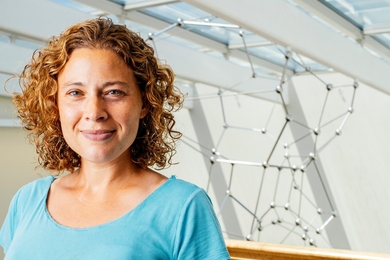MIT alum Jos� Ortiz, who earned the SB in aeronautics and astronautics in 1992, has used his knowledge of MIT for a musical flight of fancy based on Lewis Carroll's Alice in Wonderland and Through the Looking Glass. A cast of 10 will premiere his new musical play, Tales from the Infinite Corridor, in a minimally staged concert performance held Friday and Saturday, June 9-10 at 7pm at the First Parish Meeting House in Shirley, MA.
Tales from the Infinite Corridor is a semiautobiographical account of the struggles of Alice, an MIT PhD student, struggling to overcome the stresses caused by her work, her chaotic personal life and her aspirations for the future and the past.
Mr. Ortiz notes that many of Carroll's original characters are "thinly veiled as people I met at MIT -- students, faculty members and employees." The White Rabbit, he says, is Alice's uptight thesis advisor and the Caterpillar is a psychiatrist who treats Alice's depression with hallucinogenic drugs.
"The nonsensical situations that Alice deals with are parodies of the modern world," says Mr. Ortiz, noting that a lot of it makes fun of MIT and corporate life. "The nonsense doesn't stop when you graduate," observes the Hewlett-Packard software engineer who lives in Shirley with his wife Juliana and their two young children.
Mr. Ortiz's musical aspirations were nurtured at MIT, where he minored in music. He composed Tales from the Infinite Corridor for synthesizer using sequencing software, a "trick" he recalls learning with Professor Tod Machover.
Other music faculty remember Mr. Ortiz's student days. Professor Lowell Lindgren called him a "brilliant" student and Senior Lecturer Edward Cohen recalled that Mr. Ortiz's final project was titled Bore in G major. "I liked him anyway," he quipped.
Although Tales from the Infinite Corridor is based on a children's story, Mr. Ortiz advises that this "darker" version is intended for adult audiences only. Tickets are $4; proceeds benefit restoration of the meeting house. For more information, call (978) 448-8627.
A version of this article appeared in MIT Tech Talk on June 7, 2000.







